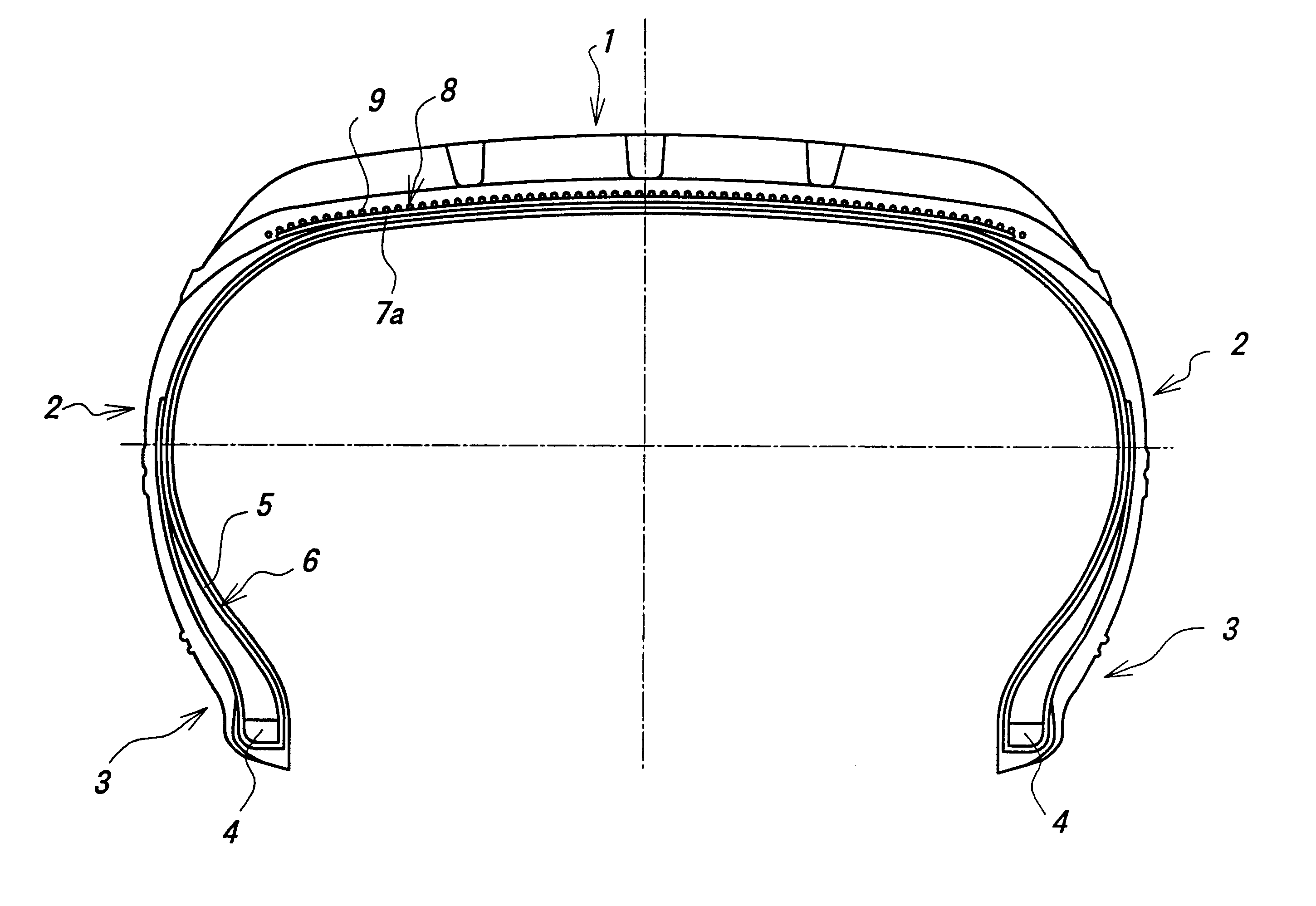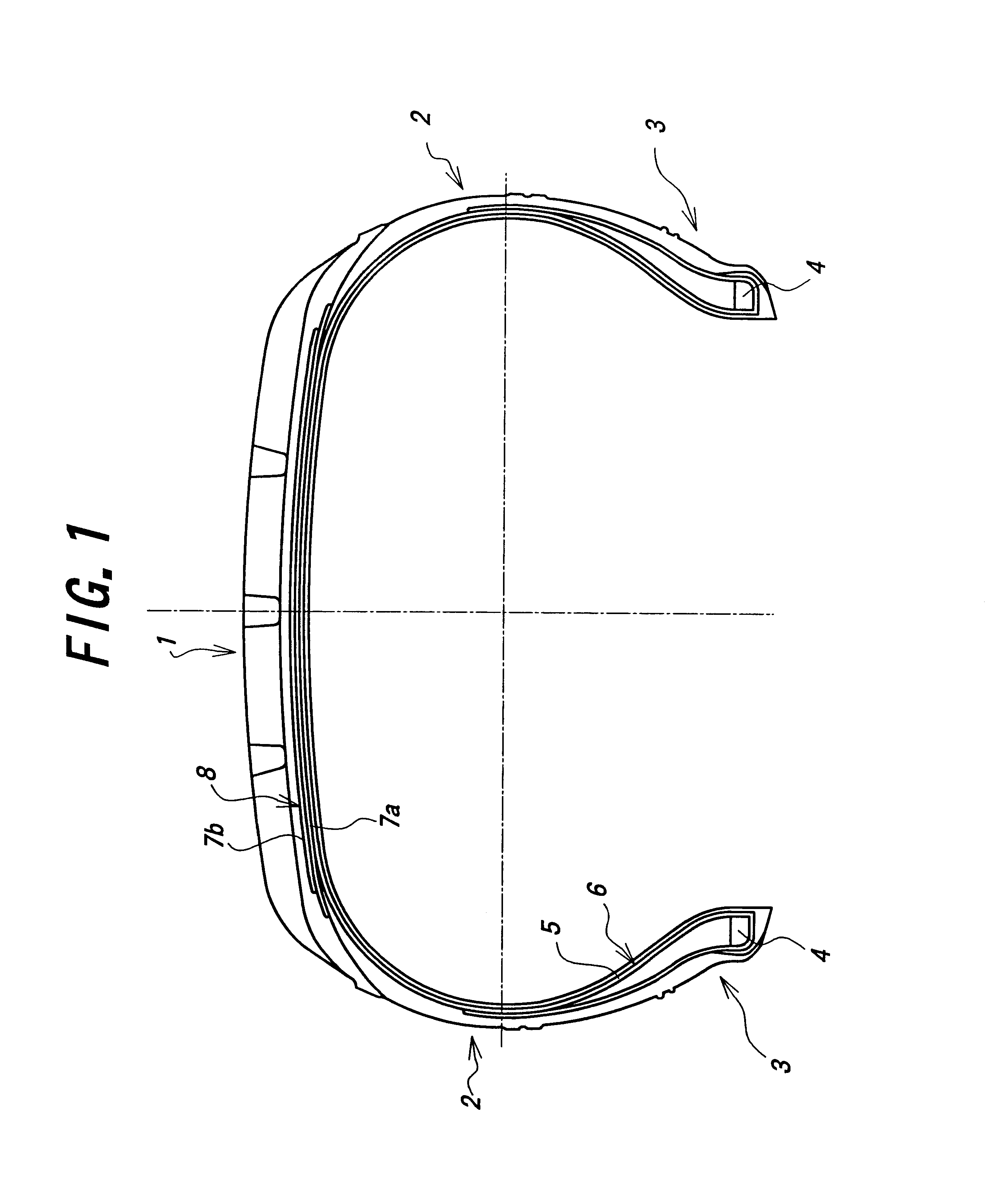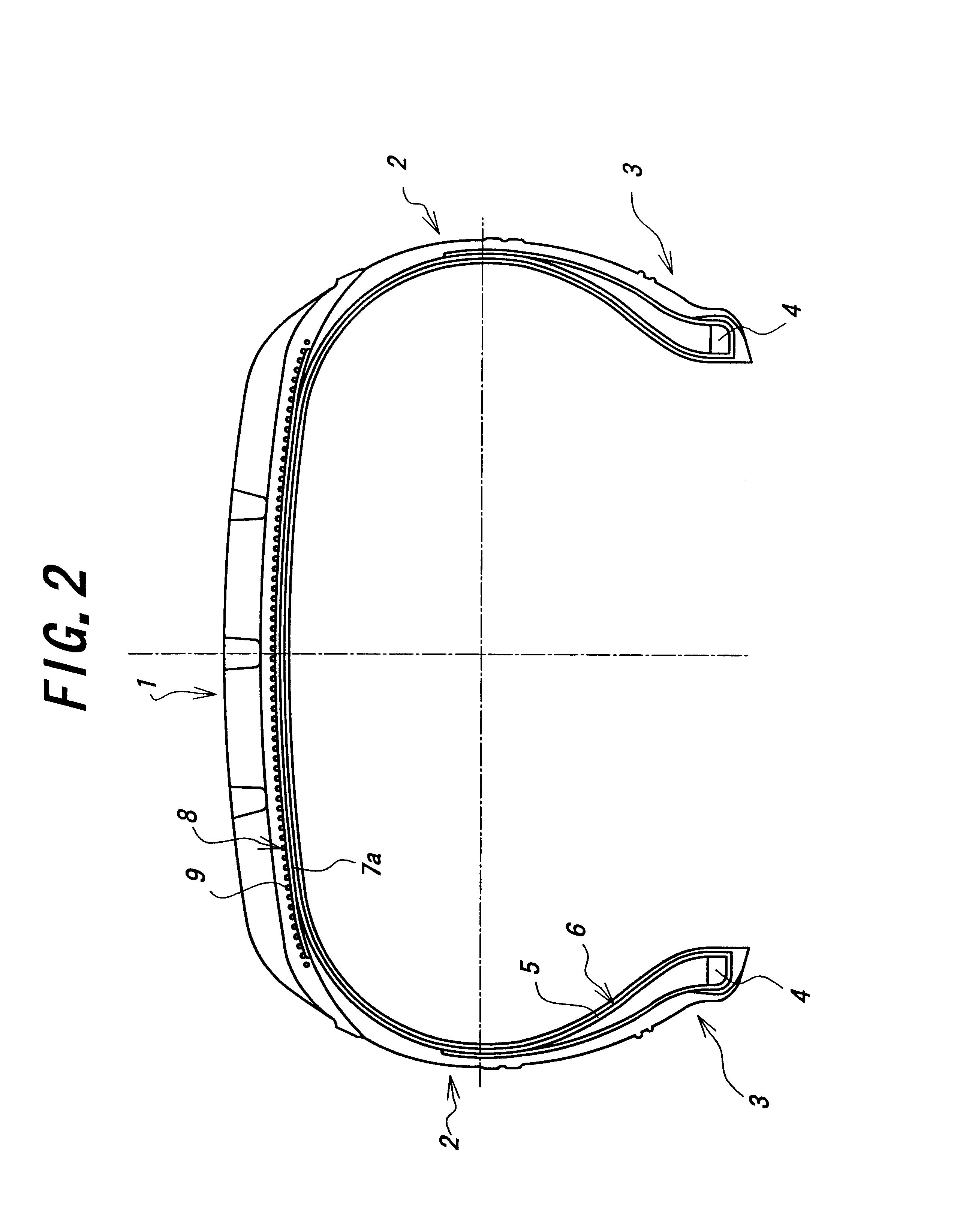Pneumatic tire comprising carcass and belt of organic fiber cords with specified modulus of elasticity
a technology of organic fiber cords and pneumatic tires, applied in the field of pneumatic tires, can solve the problems of high steering stability, wear resistance and the like cannot be guaranteed, and the rigidity of the tire casing cannot be achieved
- Summary
- Abstract
- Description
- Claims
- Application Information
AI Technical Summary
Benefits of technology
Problems solved by technology
Method used
Image
Examples
Embodiment Construction
In FIG. 1 is sectionally shown a first embodiment of the pneumatic tire according to the invention, wherein numeral 1 is a tread portion, numeral 2 a sidewall portion extending inward from each side end of the tread portion 1 in a radial direction of the tire, and numeral 3 a bead portion continuously extending from an inner end of the sidewall portion in the radial direction.
In such a tire, a radial carcass 6 forming a skeleton structure of the tire is comprised of, for example, one carcass ply 5 toroidally extending between a pair of bead cores 4 embedded in the respective bead portions 3, wherein both side portions of the radial carcass 6 are wound around the bead cores 4 from an inside of the tire toward an outside thereof in the radial direction. And also, the carcass ply 5 contains organic fiber cords extending at a cord angle of 90.degree. or near to 90.degree. with respect to an equatorial plane of the tire and having a modulus of elasticity of 9.8-24 kN / mm.sup.2 such as pol...
PUM
| Property | Measurement | Unit |
|---|---|---|
| slip angle | aaaaa | aaaaa |
| slip angle | aaaaa | aaaaa |
| speed | aaaaa | aaaaa |
Abstract
Description
Claims
Application Information
 Login to View More
Login to View More - R&D
- Intellectual Property
- Life Sciences
- Materials
- Tech Scout
- Unparalleled Data Quality
- Higher Quality Content
- 60% Fewer Hallucinations
Browse by: Latest US Patents, China's latest patents, Technical Efficacy Thesaurus, Application Domain, Technology Topic, Popular Technical Reports.
© 2025 PatSnap. All rights reserved.Legal|Privacy policy|Modern Slavery Act Transparency Statement|Sitemap|About US| Contact US: help@patsnap.com



